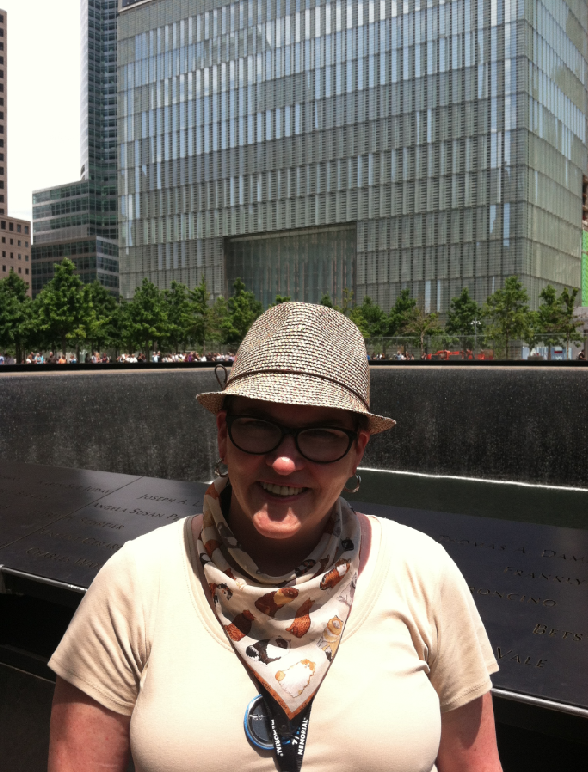Make a donation to the museum
Volunteer Brings Comfort, Closure to Museum Visitors
Volunteer Brings Comfort, Closure to Museum Visitors

After the events of Sept. 11, 2001, longtime Queens resident Eileen Egan-Annechino largely avoided downtown New York City. Anytime business brought her south of City Hall, she created makeshift routes around the World Trade Center—keeping her head down low, and often crying if she happened to catch a glimpse.
But 10 years later—shortly before the public opening of the 9/11 Memorial in September 2011—she received a ticket through Con Edison for early admission to the Memorial and mustered up the strength to finally return to the WTC site.
“I said, ‘Okay, I think it’s time. I can do this,'" Egan-Annechino said. “It was early evening. The Memorial was lit and it was beautiful, serene and an incredibly respectful display of honor and remembrance for those lost. I felt a sense of closure and peace for my hometown, my country and for the victims, families, survivors, first responders and those who had worked so hard to make the Memorial happen."
Now, as a 9/11 Memorial volunteer, she is helping to bring a similar sense of comfort and closure to many of the Museum’s visitors.
Egan-Annechino, who retired in 2012, credits ConEd, her employer of 37 years, for spreading the word about potential volunteering opportunities.
“It’s nice to be with people again—speaking to them about 9/11, about the city, about who we are as New Yorkers and where we stand,” she said.
For Egan-Annechino, volunteering entails talking to visitors and offering them whatever it is they may need—from directions and exhibition inquiries to a sympathetic shoulder to cry on.
"Sometimes it’s just an ear," she said. "And sometimes it’s just putting your hand on their arm and saying, ‘I know; I understand.’ People need to witness, I think, to where they were—and who they were."
She shared a story of a victim’s mother who approached her during the Museum’s opening dedication period. The woman confessed that despite coming to Ground Zero every year, she had always been unable to feel her daughter’s presence. "Now, with this place, I have joy and peace," the woman told her, adding that she now feels she has a place to come and talk to her daughter.
“That is so profound for them—and for [me]," Egan-Annechino said.
Egan-Annechino began as a Visitor Services Volunteer in January and became increasingly interested in the Docent program. She was recently accepted into the program and is eager to complete the training process.
“I wish more people would volunteer,” she said. “It is a glorious experience.”
9/11 Memorial volunteers help educate visitors on the events of 9/11 while humanizing the story with their personal experiences. Listen to stories from the 9/11 Memorial Volunteers or visit 911memorial.org/volunteer to learn more about getting involved.
By Jennifer Finn, 9/11 Memorial Communications and Digital Media Intern
Previous Post
Medal of Honor Recipient Visits Memorial, Museum

Retired Marine Cpl. William Kyle Carpenter visited the 9/11 Memorial and Museum on Wednesday morning, less than a week after receiving a Medal of Honor—the highest military award for valor in action.
Next Post
A Look at the Technology Inside the Museum

News organizations are depicting the various ways that technology is enabling visitors to remember Sept. 11, 2001 and its aftermath at the 9/11 Memorial Museum – from online registries and mobile apps to the more than 90 multimedia installations that exist in the museum.